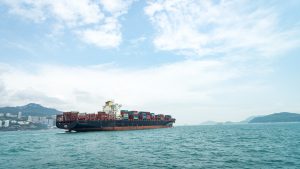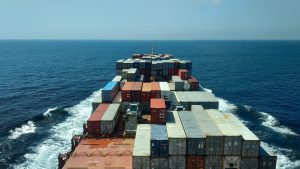Trans-Pacific Rate Drops Expected to Last Through End of Year
After generating record-breaking profits during the pandemic, shipping companies are feeling the squeeze of recent inflation. Container carriers are planning on blanking nearly 700,000 TEU in the month of October. Carriers are looking to entice customers back with lower rates. This appears to be one of the best times in recent memory for those looking to transport products internationally, especially between China and the United States.
These trans-Pacific rate drops are not entirely unexpected. The rates that began rising to unimaginable heights during the pandemic stemmed from mostly situational factors. China’s aggressive zero-Covid policy led to shutdowns of their largest ports in Shanghai. This created backlogs which shifted to the ports of Long Beach and Los Angeles, among others. Protests from truckers over vaccine mandates and union regulations led to more delays. However, as the impact of coronavirus has lessened, the economy has been able to work through those issues. Even last month when it appeared a railroad strike could cripple the supply chain again, President Biden stepped in to keep the wheels moving.

Decrease Imports Lead to Trans-Pacific Rate Drops
The biggest factor in the trans-Pacific rate drops is a decreased number of imports. Inflation has led many Americans to tighten their belts and reduce spending on physical goods. Experts forecast growth as little as 7% in the retail sector, and only 1% when adjusted for inflation. This is the smallest year-over-year growth in the last decade and stands in stark contrast to last year’s growth of nearly 15%.
Retail is not the only area where imports are shrinking. The U.S. Energy Information Association reported that U.S. crude oil imports were down 500,000 barrels per day from the previous week. Exports, however, continued to rise. Russia’s continued aggression in Ukraine, worsening the energy crisis in Europe, has exacerbated global inflation, as well.
Increased Space in Domestic Ports
A side effect of diminished imports is the backlog of ships in the ports of Los Angeles and Long Beach has been almost completely eradicated. “Container ships have basically returned to normal,” said Kip Louttit, Executive Director of the Marine Exchange of Southern California. “The remainder of the nine in the backup are 50 to 150 miles offshore.” The ability to manage the congestion is a combination of strict management of arriving ships and support from other ports.
 The increased capacity of west coast ports has helped to lower rates. Container ship dwell times and truck turn times have both decreased. While blank sailings compared to this time last year have increased, “This does not necessarily indicate a major trend change,” Adam Szabo, a shipping analyst for Sea Intelligence, told JOC.com. “It may just very well be that carriers do not announce or indicate many blank sailings so far ahead.” Either way, the current drop in rates provides an interesting opportunity for international business.
The increased capacity of west coast ports has helped to lower rates. Container ship dwell times and truck turn times have both decreased. While blank sailings compared to this time last year have increased, “This does not necessarily indicate a major trend change,” Adam Szabo, a shipping analyst for Sea Intelligence, told JOC.com. “It may just very well be that carriers do not announce or indicate many blank sailings so far ahead.” Either way, the current drop in rates provides an interesting opportunity for international business.
Railroad Rates also Down
Once goods have reached the United States, they are finding even cheaper rates for domestic transportation at the moment. Union Pacific Railroad is reducing their rates from Southern California and J.B. Hunt Transport is forgoing their peak season surcharges. This is not a decision transporters take lightly, as surcharges were as high as $5,000 per container this time last year.
The decrease in railroad rates can be attributed to several factors. First, the weakening consumer market is creating less demand. This works in conjunction with the slowing of imports from China and other countries. Second, the lower rates appear to be a step for railroads to become more competitive with trucking rates.
How SiShips Gives You the Advantage
Sheltered International combines expertise with state of the art software to bring you quality domestic and international shipping solutions. SiShips puts the shipper in control, offering efficient and cost effective ways to ship your product.
To learn more about managed transportation with SiShips, or to view a demo of our software, contact us today.

